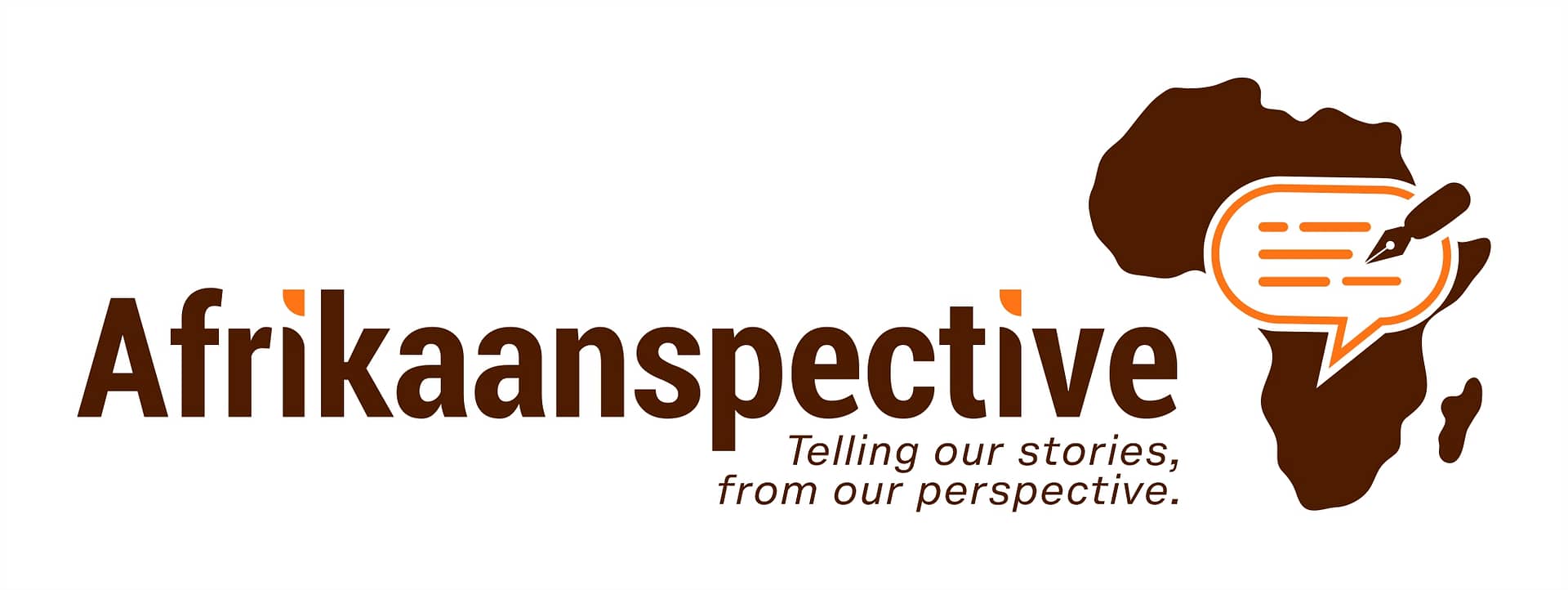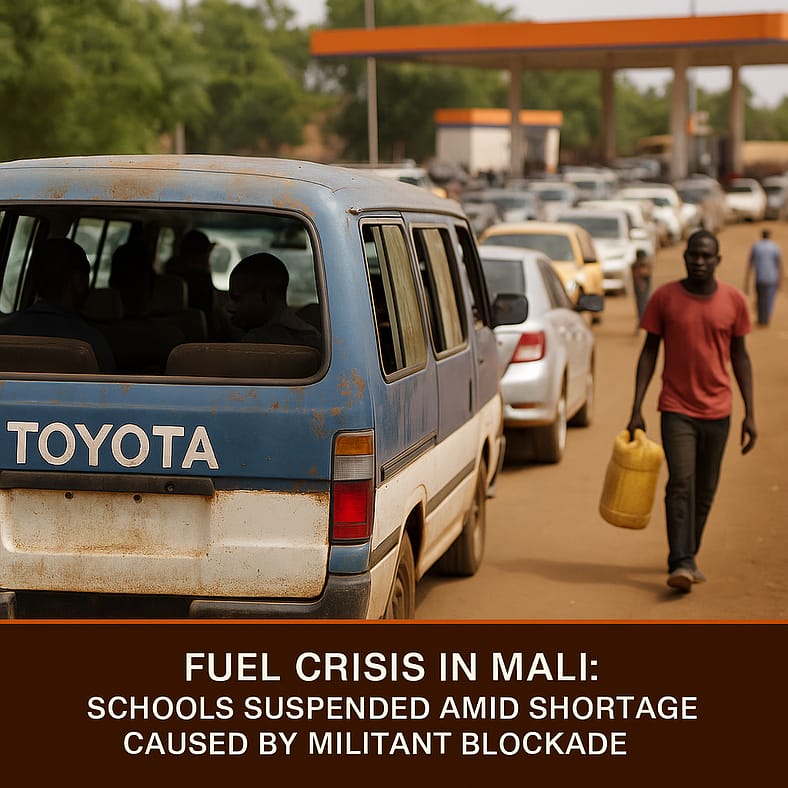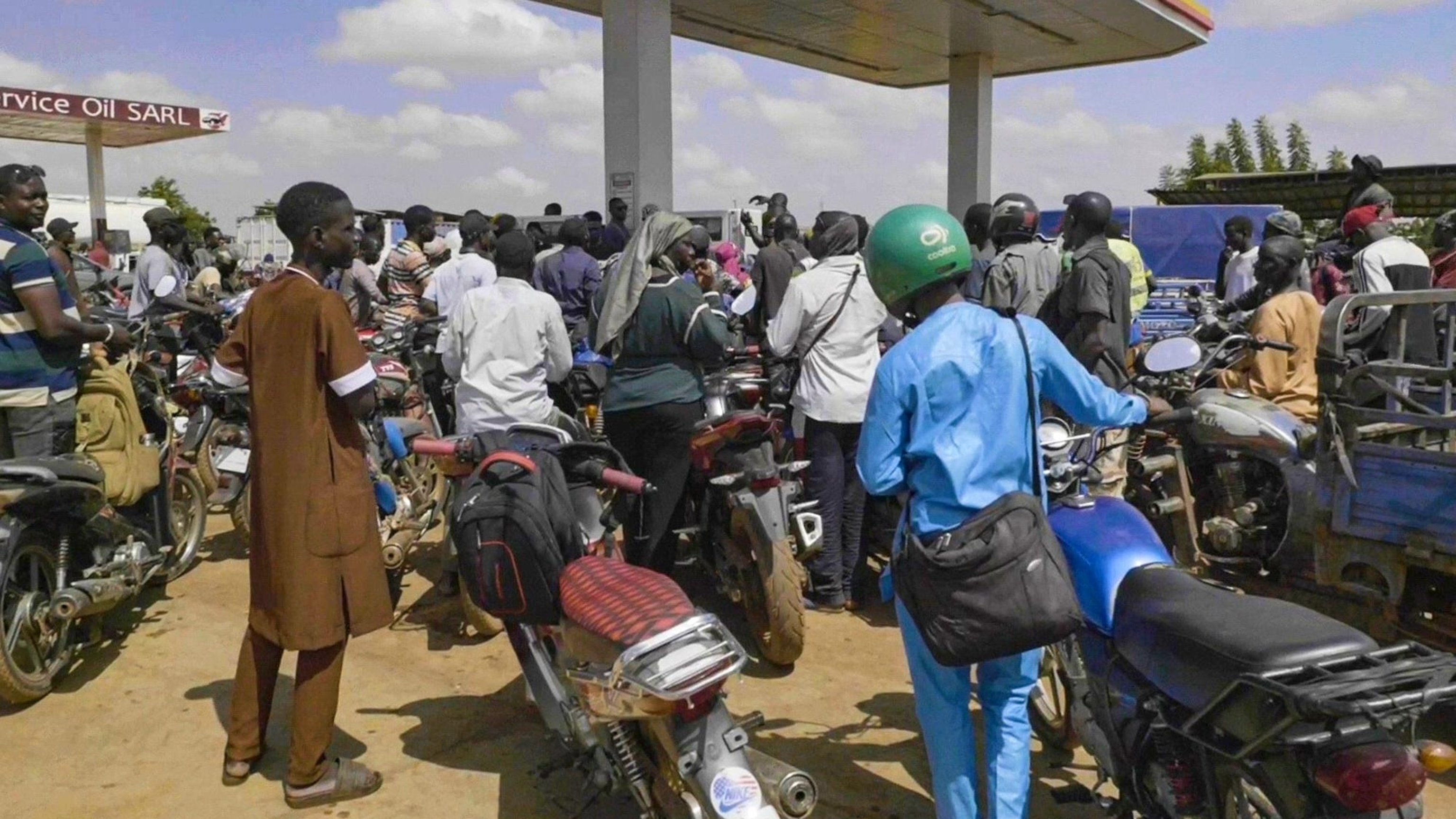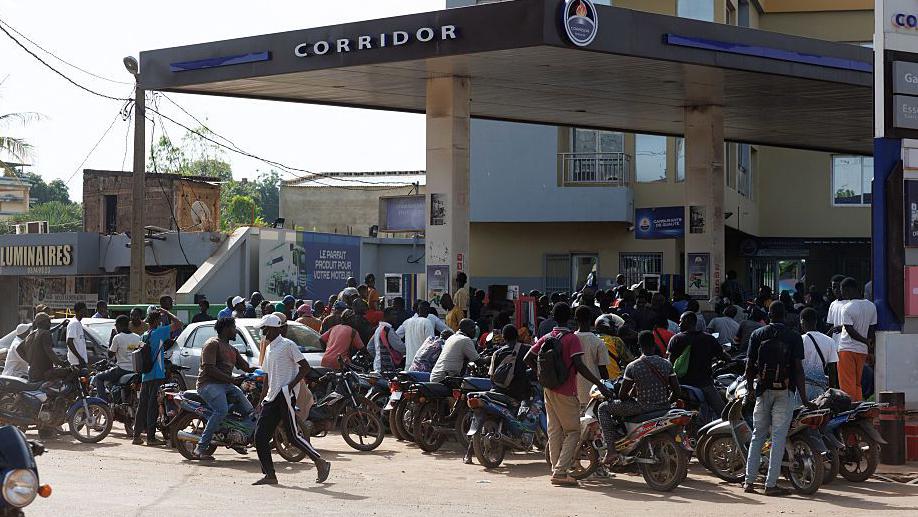Crisis at the Core: How Mali Ran Out of Fuel and Hope
The Mali fuel crisis has thrown the entire nation into disarray, forcing the government to suspend all schools and universities for two weeks.
In a statement reported by Reuters and Associated Press, authorities cited severe fuel shortages caused by militant blockades that have cut off supply routes to major cities.
For many Malians, this is more than an energy shortage, it is a direct assault on daily life, education, and national stability.
Bamako residents queue for scarce fuel as the Mali fuel crisis worsens. (Photo: AP)
The Roots of the Mali Fuel Crisis
The Mali fuel crisis began in early September when the jihadist group Jama’at Nusrat al-Islam wal-Muslimin (JNIM) imposed a blockade on fuel deliveries entering the country.
Hundreds of trucks carrying petroleum products have since been stranded at Mali’s borders with Côte d’Ivoire and Senegal, paralyzing transport networks and trade routes.
The blockade is part of JNIM’s broader campaign to undermine the military government, led by Colonel Assimi Goïta, by crippling essential services.
As a result, the Mali fuel crisis has become both an economic and security weapon, a calculated move that hits the population where it hurts most.
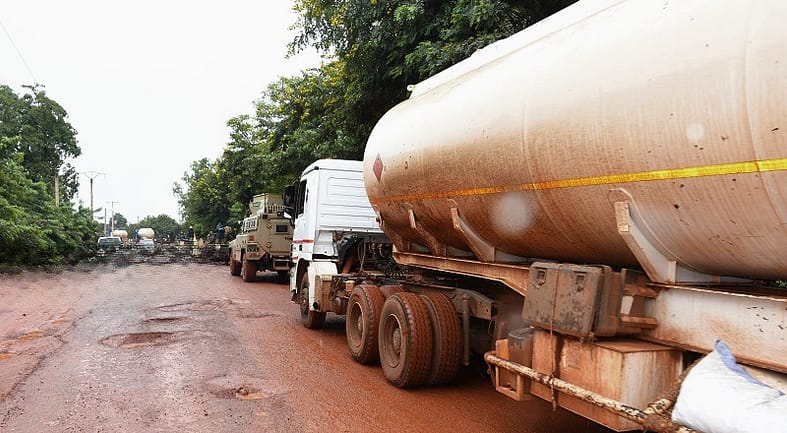
Fuel tankers stranded near Mali’s western border as militants tighten their blockade. (Photo: Washington Times)
A Classroom in the Crossfire
The Mali fuel crisis has brought education to a standstill. The Ministry of Education announced that schools and universities would remain closed for two weeks as many teachers and students can no longer commute.
In a nation where access to education has already been weakened by years of conflict and instability, the suspension is a heavy blow.
Parents in Bamako expressed frustration and fear that the school calendar could collapse if the situation persists.
“It is painful,” says Aissatou Koné, a mother of three in the capital. “We survived the pandemic and the coups, but this time the Mali fuel crisis has made life unbearable. How do children learn when there is no transport, no power, and no fuel?”
Schools remain deserted as the Mali fuel crisis forces a national shutdown. (Photo: Reuters)
Economic and Political Fallout
The Mali fuel crisis has intensified economic hardship in an already struggling nation. Fuel prices have tripled, public transport is barely running, and food costs have soared.
Markets close early as generators run out of diesel. Hospitals face power cuts. The black market for fuel is booming, with traders selling jerry cans at five times the normal price.
In response, Mali’s junta government has signed a new petroleum deal with Russia to secure emergency supplies. But analysts warn that such partnerships are temporary fixes to a deeper problem, insecurity and overdependence on vulnerable supply chains.
Economist Souleymane Diarra said that “the Mali fuel crisis is not just an energy issue; it is a mirror of state fragility. You cannot stabilize the economy when militants control your borders.”
Residents buy fuel at inflated prices as shortages deepen across Mali. (Photo: AP)
The Human Cost of the Mali Fuel Crisis
At the heart of the Mali fuel crisis are ordinary people. The teacher who walks 10 kilometers to reach school, the motorcyclist stranded in traffic, the trader whose goods rot in the sun because transport has collapsed.
Hospitals in the northern towns of Mopti and Gao report limited operations as generators run dry. Humanitarian agencies warn that the situation could worsen food insecurity and threaten health services across rural areas.
“We cannot separate the Mali fuel crisis from the security crisis,” says a Red Cross representative. “Every litre of fuel is linked to survival, for ambulances, hospitals, schools, and food deliveries.”
Malian women stranded as transport halts in Bamako due to the fuel shortage. (Photo: BBC Africa)
The Wider Sahel Impact
The Mali fuel crisis sends a warning to neighboring countries across the Sahel; Niger, Burkina Faso, and Chad, where similar militant blockades threaten cross-border trade.
Experts note that the blockade strategy could become a new form of economic warfare, targeting fuel supply to weaken governments without open combat.
For Africa, the Mali situation is a reminder that stability depends on more than military strength. It depends on governance, economic planning, and the protection of essential civilian systems.
“The Mali fuel crisis reflects what happens when conflict meets dependency,” says regional analyst Fatoumata Kane. “It is not just Mali’s problem; it is Africa’s cautionary tale.”
Map showing affected regions during the Mali fuel crisis. (Source: Wikimedia)
A Nation Running on Empty
As the Mali fuel crisis continues, millions of Malians face uncertainty. Education is halted, trade is frozen, and public trust in government responses is thinning.
Yet, amid the despair, communities are finding ways to adapt; sharing rides, using bicycles, and relying on solar lamps to keep classrooms lit.
The road to recovery will require more than new fuel contracts. It will demand peace, stability, and resilient infrastructure that no blockade can break.
Until then, the Mali fuel crisis remains a haunting reflection of how fragile governance, militant pressure, and human endurance intersect in modern Africa.
